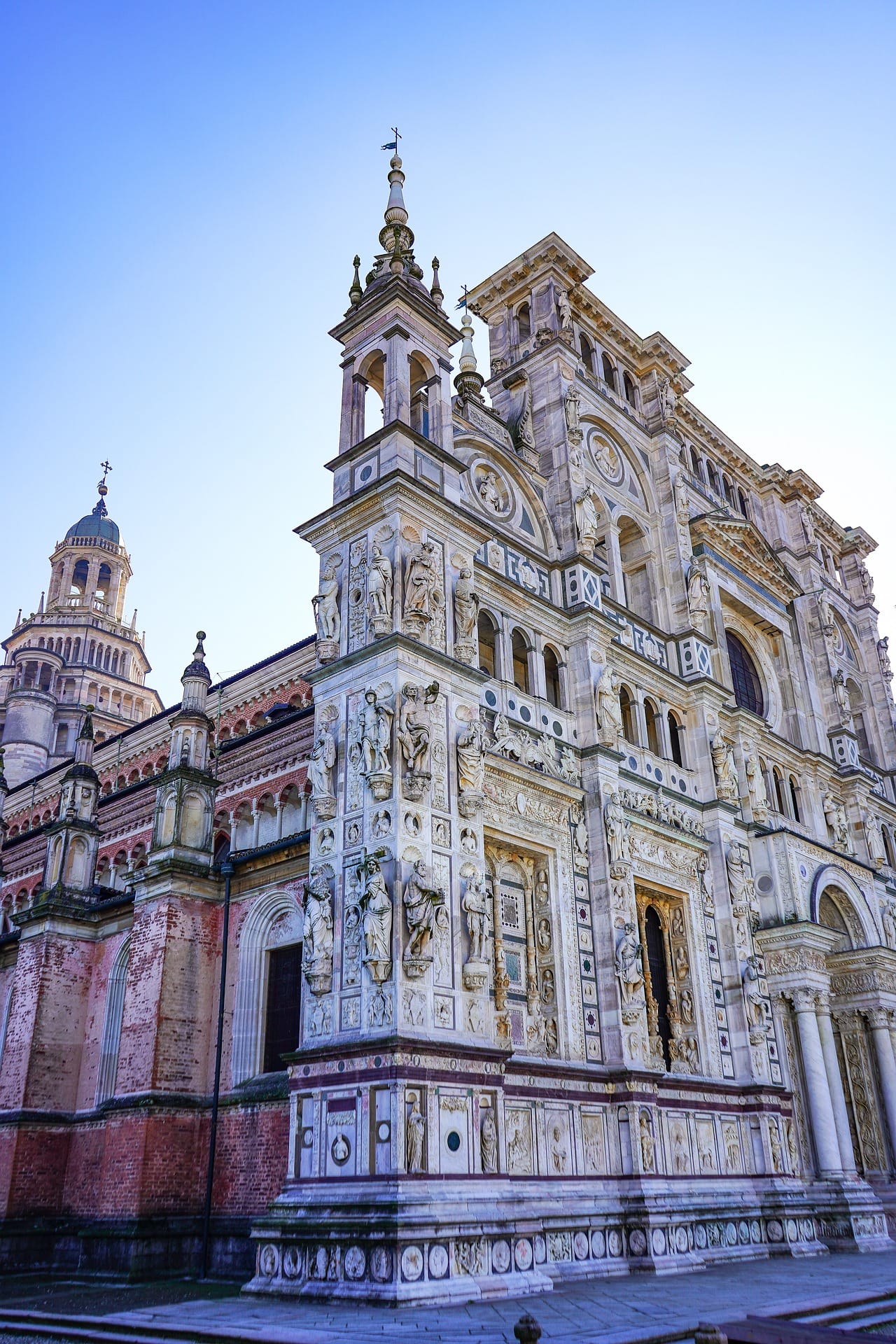Certosa di Pavia: A Renaissance Gem
Passing through a portal adorned with sculptures, visitors are led from the church to the Small Cloister, a place of community life for the fathers. This cloister, with its arcades, connects various essential rooms, fostering a sense of unity. The stone and terracotta washbasin in the Small Cloister narrates the biblical scene of the Samaritan woman at the well, offering a touch of artistry amidst tranquility.
The Large Cloister, a vast expanse with 36 cells overlooking a charming garden, tells its own tale through columns adorned with terracotta ferrules, statues, and alternating white and pink Verona marble. The cells, each a monk’s abode, echo a bygone era, where solitude and communal gatherings in the refectory were part of daily life.
Oltrepò Pavese: A Culinary and Natural Odyssey
Beyond Certosa di Pavia, venture into the enchanting Oltrepò Pavese, a hilly expanse boasting medieval villages, castles, and bucolic landscapes. This region, a haven for nature enthusiasts, beckons with inviting woods, hiking trails, and a rich tapestry of history.
Nestled in the Lombardy region of Italy, the Certosa di Pavia stands as a testament to Renaissance artistry and architectural grandeur. This captivating complex, comprising the Santa Maria delle Grazie church and the sprawling ducal court, invites visitors into a world where history, art, and tranquility converge.





